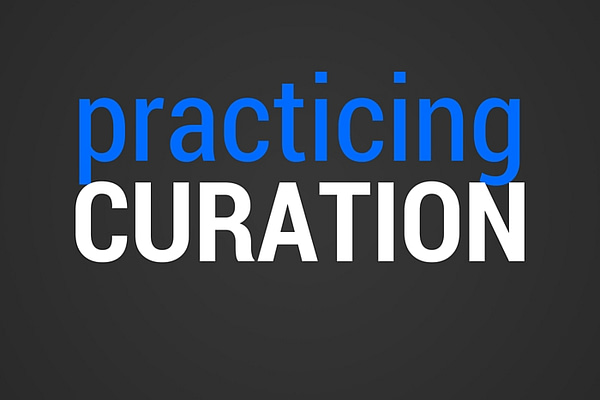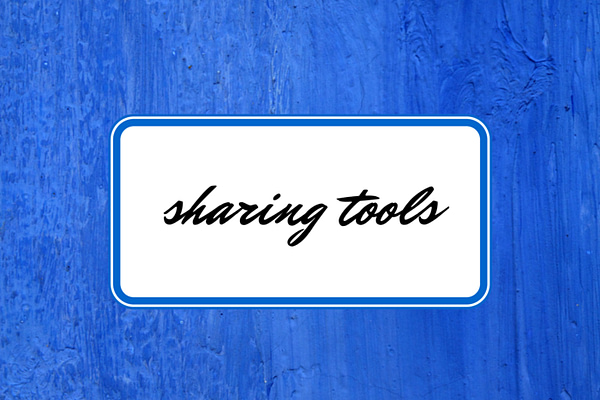
This article is part of the guide Sustaining Higher Education in the Coronavirus Crisis. on EdSurge and is reposted here with permission.
Dear Bonni,
I have heard you recommend that we think more about being content curators, instead of creators. I am excited about the possibilities. Do you have a recommendation for how much should be curated in online classes vs. how much should be original and created by the instructor? In other words, is there such a thing as too much curation of existing content?
—New to online teaching and thinking like a curator
As universities around the world attempted to move in-person classes into the online environment at the start of the pandemic, faculty quickly became overwhelmed at all the tasks that needed to be done. One mistake all too many make is to think that we have to create all the content for our online courses when there is an abundance of material already available.
Content creation takes considerable time and resources. While I typically post an informal video each week in my classes (recorded the day prior to the start of the week), I do a tremendous amount of curation for the majority of the class content—meaning I’m recommending articles, podcasts, videos and sites elsewhere on the internet. Here are just three examples of how professors might curate podcast episodes to use in different disciplines.
- I teach business classes, and I find the Planet Money podcast to offer engaging episodes that heighten the listener’s curiosity. Episode 216: How Four Drinking Buddies Saved Brazil recounts a currency crisis the country experienced where the value of items fluctuated radically on a daily basis. The government brought in four economists to advise them on how to solve the problem. I usually have students share how they think Brazil resolved the lack of confidence in the country’s currency and get the students thinking about the challenges involved.
- Podcasts extend well beyond the business realm. The producers of RadioLab state that the show’s mission is to explore a strange world. These masterful storytellers have taught me so much about science over the years, as well as encouraged me to have more of a childlike curiosity coming into a topic I know less about. The episode titled Patient Zero begins with the story of Typhoid Mary and explores other public health crises, such as AIDs. This is just one of many of RadioLab’s rich podcast catalog that would apply in nursing, anthropology, public health and other programs.
- The humanities also have a deep well to draw from in podcast back-catalogs. NPR’s More Perfect podcast began by exploring interesting supreme court cases and their relevance today. Then, the show launched into an incredible project. They partnered with an eclectic set of musicians to produce an album with songs written for the 27 amendments to the U.S. constitution. The “liner notes” were the podcast episodes, where they shared the history of each amendment’s formation, as well as music from More Perfect: The Album. Dolly Parton belts out about the 19th amendment: “We had to fight for womens’ rights; They said we couldn’t vote.” Flor de Toloache, an all-female mariachi band, sings in English and Spanish about the 2nd amendment. The entire podcast series and the accompanying album would be excellent content in law schools, history courses and political science seminars.
You asked if I thought there was such a thing as too much content creation for someone teaching a class, and you may already be predicting my answer: No. The role of a teacher is to facilitate learning, not “deliver” content. So I like to think of myself as co-designing experiences—much of which will draw inspiration from sources outside of my own creative capabilities.
The first step to becoming a content curator is to use a digital bookmarking service. I like Pinboard.in, but there are plenty of options out there. Once I find information that may relate to one of my classes, I save it to my bookmarks and enter tags to help me retrieve the information later on. The Planet Money episode I mentioned earlier about the Brazilian currency crisis got tagged with: #economics (topic), #BUSN114 (a class with at least one learning outcome related to the topic of the episode), #audio (format), and #planetmoney.
Once you build up different types of content (videos, articles, podcasts, exercises, activities, case studies and so on), you can start bringing them into your classes. I like to ask myself what I want students to do with whatever content I am bringing into the class. Do I want them to reflect on what they heard? Differentiate between two things (perhaps the United States’ price stability versus Brazil’s at that time)? Use the concepts learned in a different context? My role as a teacher becomes one of a translator. How do I help students take what was shared in the content and apply it in some way?
Well before COVID-19 entered the world, I was doing extensive curating on a daily basis. Some of what I save has nothing to do with teaching. Our family just got a bread machine, so there are a lot of recipes being saved these days. I enjoy learning about politics, so there are many bookmarks saved on that topic even though I don’t directly teach it. When it comes to my teaching, however, I always have a set of resources that I can search for by type of content, topic, person and class number.
There’s no such thing as too much content curation, as far as I am concerned. We just need to take it to the next step and determine how to facilitate learning from those wonderful resources we have collected.




The word “curation” irks me a bit, but one can create modular activities (swap one out for another to keep up with the times or when a, uh, “curated” media source disappears) that link to YouTube, TED talks, and an entire array of online media. Let NASA or some expert at National Geographic or something “teach” the content. Ditch the text book too. There are open-source “books” and our library has multiple online textbooks students can access and download chapters of.
So, 22 years ago when I started teaching online one might have had to create from scratch, now we can, uh, “curate” or simply bring together, multiple sources from all over the Interwebs.
Sidenote: I just did a “Faculty-Led Remote Teaching Roundtable,” like a “brown bag,” on the topic of using blogs for online instruction, mashed up with “ungrading” and “LEA,” with a touch of Padlet. All inspired by your podcast. I’m a TiHEd pusher at my college. Thanks for your inspiration and bringing on great guests.
(Oh, and I got a chance to explain what hyflex really is to my dept. chair…our executive administration is a bit confused and talking about that which they do not know and pushing that onto our depts. I turned them on to Episode 327…more authority when it comes from TiHEd!)